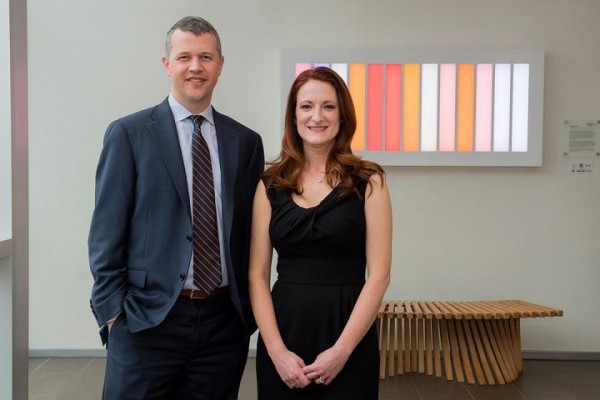Videos depicting complex scientific concepts breaks barriers for deaf STEM students

Research has revealed that people who learn English as a second language, including deaf and hard-of-hearing individuals, are underrepresented in STEM fields because of academic language abilities required to compete in those disciplines. A new project at Rochester Institute of Technology's National Technical Institute for the Deaf is helping to break down those obstacles specifically for deaf and hard-of-hearing people.
Researchers at RIT/NTID will create and test a solution that addresses the academic language barrier in physics by producing a comprehensive series of short, conceptually accurate signed videos, each of which is focused on a singular physics concept. As part of this process, the team will vet and share conceptually accurate signs for technical vocabulary. The project is funded by a $295,000 grant from the Gordon and Betty Moore Foundation.
"Participation of deaf and hard-of-hearing individuals in STEM fields is limited due to the presence of significant academic language barriers," confirmed principal investigator Jason Nordhaus, a theoretical astrophysicist and assistant professor at RIT/NTID. "In the college classroom, American Sign Language interpreters must choose the correct signs to indicate meaning of the concept being taught. At the same time, most interpreter training is focused on acquiring American Sign Language. It is rare for interpreters to be an expert in the language and STEM concepts. However, being experts in both is necessary to properly translate. Compounding the issue is a lack of conceptually accurate technical signs in STEM disciplines. Quite literally, information is lost in translation."
Conceptual understanding will first be measured in RIT physics classrooms and then at two external partner universities. The result of the project will be a sustainable online repository where the videos are freely accessible and will be shared with national interpreting organizations and universities that have interpreter training programs.
"It is our hope that this project results in a template that can be repeated for any discipline, thereby permanently eliminating the academic language barrier and increasing deaf and hard-of-hearing individuals' engagement in STEM disciplines," said co-investigator Jessica Trussell, assistant professor in the Master of Science in secondary education for students who are deaf or hard-of-hearing teacher preparation program at RIT/NTID.
Nordhaus is committed to increasing the participation of deaf individuals in physics and routinely involves deaf students in research work, including 11 undergraduate students and one doctoral student, thus far. He serves on, and is a founding member of, the executive committee for the American Astronomical Society's Working Group on Accessibility and Disability.
Trussell, a member of RIT/NTID's Center for Education Research Partnerships, has 12 years of experience teaching deaf and hard-of-hearing students from preschool age to adulthood. Her goal is to grow the number of deaf and hard-of-hearing people entering STEM fields by enhancing their discipline-based reading and writing skills.
Apr 22, 2019 11:52 PM EDT




